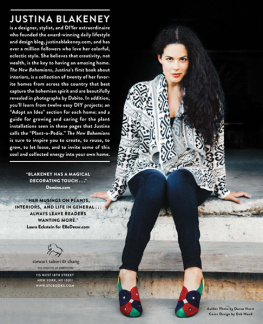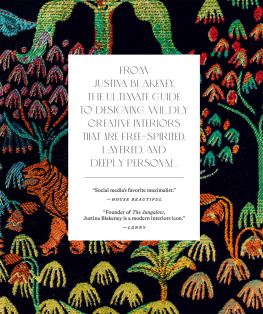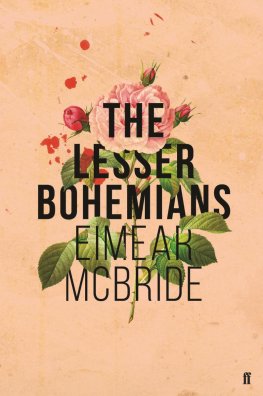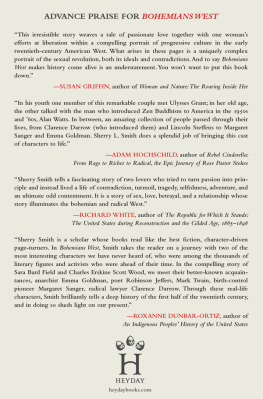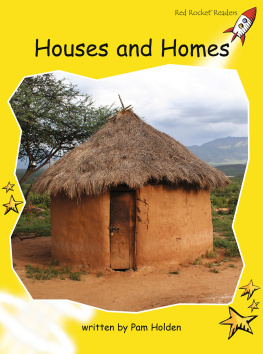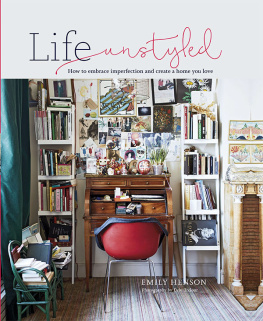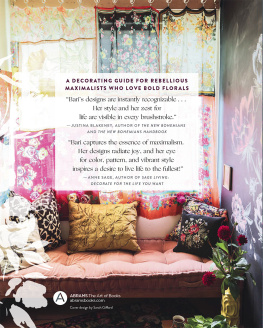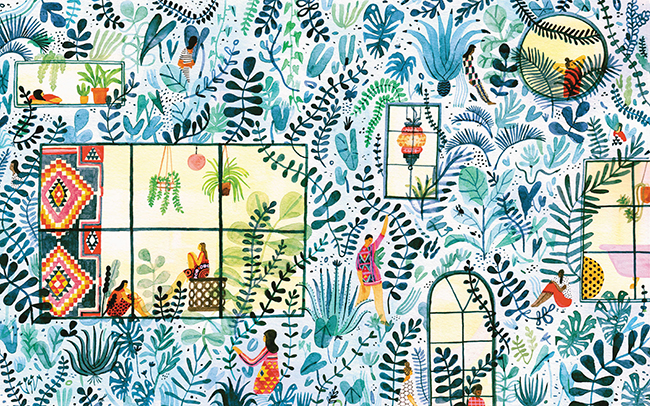



Published in 2015 by Stewart, Tabori & Chang
An imprint of ABRAMS
Text copyright 2015 Justina Blakeney
Photographs copyright 2015 Dabito
Project illustrations copyright 2015 Katie Wilson
Endpaper art copyright 2015 Monica Ramos
All rights reserved. No portion of this book may be reproduced, stored in a retrieval system, or transmitted in any form or by any means, mechanical, electronic, photocopying, recording, or otherwise, without written permission from the publisher.
Library of Congress Control Number: 2014942982
ISBN: 978-1-61769-151-5
eISBN: 978-1-61312-953-1
Editor: Andrea Danese
Designer: Deb Wood
Production Manager: True Sims
Stewart, Tabori & Chang books are available at special discounts when purchased in quantity for premiums and promotions as well as fundraising or educational use. Special editions can also be created to specification. For details, contact specialsales@abramsbooks.com or the address below.

115 West 18th Street
New York, NY 10011
www.abramsbooks.com
In the guest room of Paige Morses home (see ) in Dallas, Texas, a red suzani blanket covers the entire back wall. Her grandmothers slipper chair was upholstered with a vintage wedding blanket from India. A low mango wood table from West Elm is inspired by a ceremonial stool traditionally used by Bamileke royalty in Cameroon. The textiles in my home cost more than most of the furniture and all of the appliances, says Paige. I tend to splurge on textiles, rugs, blankets, and fabrics.
Amhalise Morgan (see ) reupholstered this chrome directors chair in woven textiles she bought on eBay.
In her art, Louise Sturges (see ) experiments with painting, photography, and multi-media. She also prints images on unusual media, like this original photograph printed onto a throw blanket.
FOR IDA

A close-up view of the wooden cabinet in the entryway of my house, which I like to call the jungalow (see ).

A plant collage on a wall in Adam Pogues loft (see ).
CONTENTS

A corner of Faith Blakeneys living room (see ).
INTRODUCTION
WHO ARE THE NEW BOHEMIANS?
What we now understand as bohemianism emerged in early nineteenth-century France when artists moved into the lower-rent Romany (gypsy) areas of Paris as they sought out alternatives to bourgeois expectations. Artists from all over the world, most with very little income, tried to make their art and eke out a living in this part of Paris. This convergence of cultures gave rise to a kind of vagabond lifestyle, where the pursuit of wealth and other traditional indicators of success were abandoned in favor of a creative life and an active engagement in the search for alternative ideals of beauty.
This search for alternative lifestyles and aesthetics continues todayespecially in response to a corporate cubicle culture that can sap the creative spirit out of anybody. Todays bohemians seek to erase the distinctions between work and play, and our living spaces reflect that lack of boundaries. The new bohemian home is a multifunctional playground for exploration and experimentation: It is an office, an art gallery, a showroom, a daycare, a photo and music studio, even a pop-up restaurant, or all of these. Our new bohemian lifestyle is rooted in freedom: free-spirited, free-form, and free of rules.
We bohemians chase free wi-fi, we blog from Brooklyn Laundromats, and we check our e-mail barefoot in Tulum. We arrive early to flea markets but late to farmers markets. We are vintage hounds. We are resourceful and profoundly creative. We are boutique owners and bloggers, mothers and makers, entrepreneurs and expats, chefs and consultants, fathers and urban farmers, doulas and dancers, collectors and curators, designers and dreamers. Our travelswhether in our own city or oceans awayinform our style. Our worldly collections are as eclectic as we are. The new bohemian is a master of layers.

The music room in Erica Tanov and Steven Emersons house (see ).

The kitchen of Emily Katz and Adam Porterfield (see ).
MY BOHEMIAN PHILOSOPHY ON CREATIVITY
My own bohemian aesthetic arose out of my multicultural upbringing in Berkeley, California. (My father is African American and Native American of the Cherokee and Chickasaw tribes, and my mother is of Eastern European Jewish descent.) The blending of ethnic backgrounds in my childhood home gave me an appreciation for mixing things up when it came to home decor. Travel also informed my aesthetic. Every year, we got at least one new stamp in our passports, learned how to say thank you in at least one new language, and tried at least one kind of totally unfamiliar food (the onion ice cream in Jakarta will go down in the history books). Along with souvenirs, like a cuckoo clock from Bern, papier-mch angels from Playa del Carmen, and a menorah from Jerusalem, I also brought back a stronger sense of self, a notion that being different was a good thing, and a pretty mean case of wanderlust that would lead me to spend ten years living abroad.
FEELING FREE
My parents werent precious about their stuff. My siblings and I took liberties moving furniture around. Id usurp a hutch from the hallway, lug it into my room, and convert it into a home for my winter clothes or art supplies. We were allowed to make design decisions. I remember playing hide-and-seek with my brother and sister at the carpet store when we were given permission to shop for our bedrooms. I painted murals on the walls and sewed my own curtains with some amazing mirror-ball fabric. My room was a forever-unfinished canvas, consistently evolving and being layered upon, and always an accurate reflection of me at any specific stage of life.
Under each roof that Ive called home since those days in the Berkeley Hills, Ive had my way with decor. In my college dorm room at UCLA, I hid with boys under layers of tented scarves and sarongs draped over and around my bed to create privacy from my roommates. When I was studying in Florence, Italy, I wanted to give my living room a Moroccan feel, so I sawed the legs down on the dining room table that came with the apartment. Im notorious for kissing rental deposits good-bye and ushering in the freedom to make myself totally at home.
Next page
